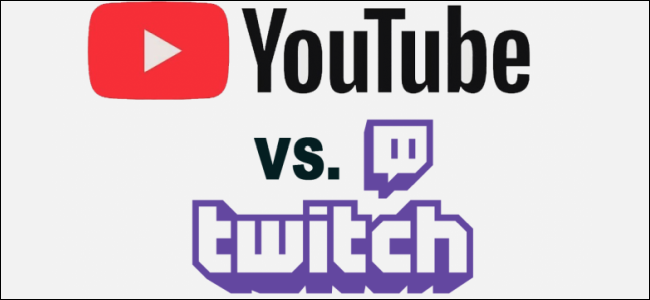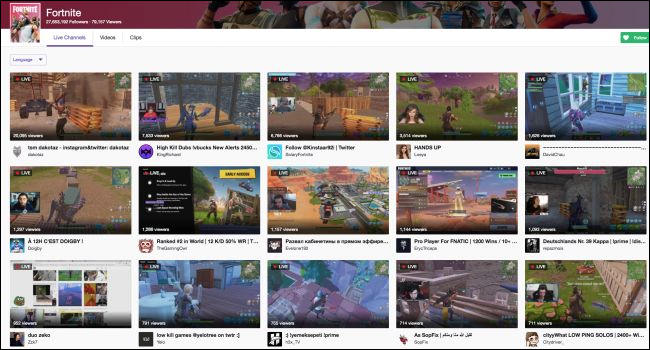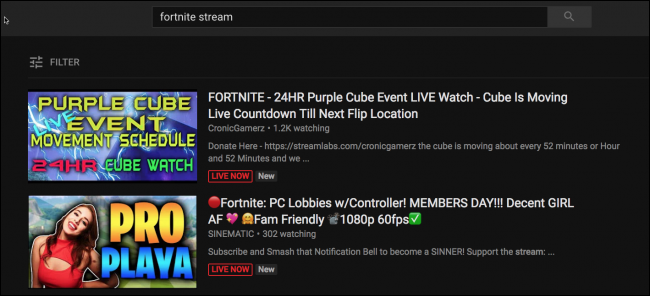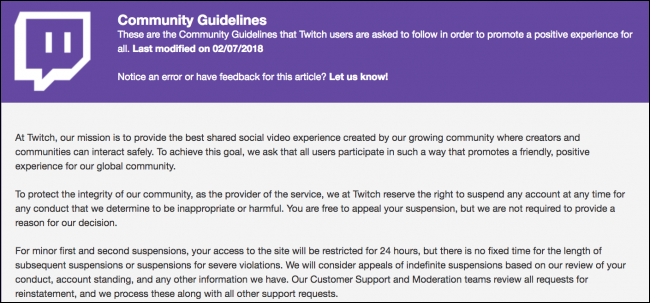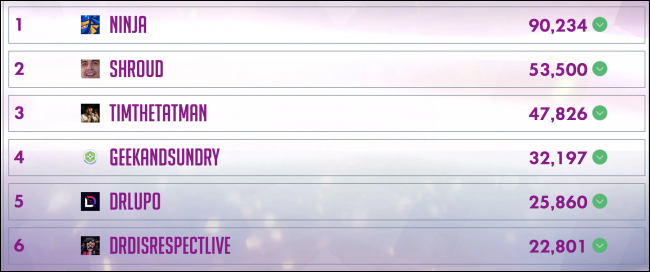Quick Links
Twitch has been the undisputed king of online video streaming for a long time. YouTube has now started to catch up, with their live system becoming fully realized and working quite well. So what's the difference between streaming with Twitch and YouTube?
How Viewers Find Your Content
On Twitch, viewers find channels mostly by browsing for games they want to watch. If you're playing that game, they might see you. When they go to watch a stream of a particular game, Twitch displays channels in descending order of the number of viewers watching that stream. This creates a bias that heavily favors established streamers since people are likely to choose a well-populated stream before even seeing the less populated ones.
Another issue with Twitch's browsing system is the lack of thumbnails. Twitch chooses thumbnails randomly, and there's nothing to set you apart from other channels. This results in everything seeming oddly homogenous.
On YouTube, things are better. It's still not easy for gamers to discover your stream---especially if it's not popular---but YouTube's algorithm can work in your favor by suggesting your stream to other people. If you make regular videos as well and have at least a couple of subscribers, the odds of viewers joining your stream goes up quite a bit. Plus, since anyone can watch a video anytime they want, using standard videos to pull viewers into your stream works more effectively than live streaming. This means you don't have to stream constantly to get people interested; you can make a few quality videos and get the same effect.
As for thumbnails, since streams on YouTube function like really long regular videos, you can upload custom thumbnails to them. This does lead to some clickbait thumbnails, though, as this simple search for "fortnite stream" shows.
Overall Content and Content Guidelines
Twitch is largely gaming-focused. They've opened up their "IRL" section recently, which has gotten popular in the last year, but for the most part, they are still a game streaming service. YouTube is a lot more flexible, with content on pretty much anything you could think to live stream.
The rules of each site are different as well. Twitch tends to be much stricter than YouTube and doesn't seem to have a problem banning people for sometimes unexplainable reasons. For example, people have been banned from Twitch for inappropriate donations sent from viewers, for saying they didn't like popular streamers, and even for voicing their concerns with the platform. Luckily, most bans on Twitch are temporary, lasting only a couple weeks unless you've committed a serious offense.
YouTube, on the other hand, doesn't care as much. It's much harder to get banned from YouTube than from Twitch. YouTube even has a "three strike" system in place for most offenses. The most significant problems on YouTube are demonetization of ads and copyright strikes on videos. You can say practically anything you want on your stream, and YouTube probably won't mind. Those things might still be against the rules, of course---it's just that YouTube's enforcement of those rules is laxer.
The Money You Can Make
Let's break it down:
Twitch
- Subscribers: Each subscriber brings in $5 per month. Twitch takes 50%, so the streamer gets $2.50 per subscriber. This is only the standard contract though and may vary for larger streamers. Large streamers on the platform can have thousands, even tens of thousands of subscribers.
- Donations: Up to the donator for how much they pay, but generally around $1-$10 for most donations. 100% of donation money goes to the streamer. Big streamers can make over $1,000 per day from donations.
- Bits: Bits are Twitch's built-in donation system. They are generally less used and pay in smaller amounts. Twitch takes a 29% cut.
- Ads: These work the same as YouTube, appearing at the beginning of the stream. These don't end up paying as much but still represent a good chunk.
YouTube
- Super Chat: This is essentially YouTube's built-in donation system. YouTube takes 30%, compared to Twitch's 0% for most donations.
- Members: Members are to YouTube what subscribers are to Twitch. YouTube again takes 30%, which is less than Twitch, but the members system is not used anywhere close to as much as Twitch subscriptions are.
- Ads: For some people, these are worse on YouTube than they are on Twitch. Ads are also nonexistent for channels YouTube has deemed "demonetized."
Taking everything into account, Twitch tends to pay a lot more than YouTube. Largely, this comes down to site culture. On Twitch, it's normal for large streamers to get many subscribers and hundreds of donations every hour, while on YouTube it's a lot more sparse, with only a few "Super Chats" and a couple of ads here and there.
Overall, Twitch and YouTube are both excellent platforms for streaming and can support you in a career as a content creator. When it comes down to it, though, you should stream where your audience is, not on which platform you like best.

